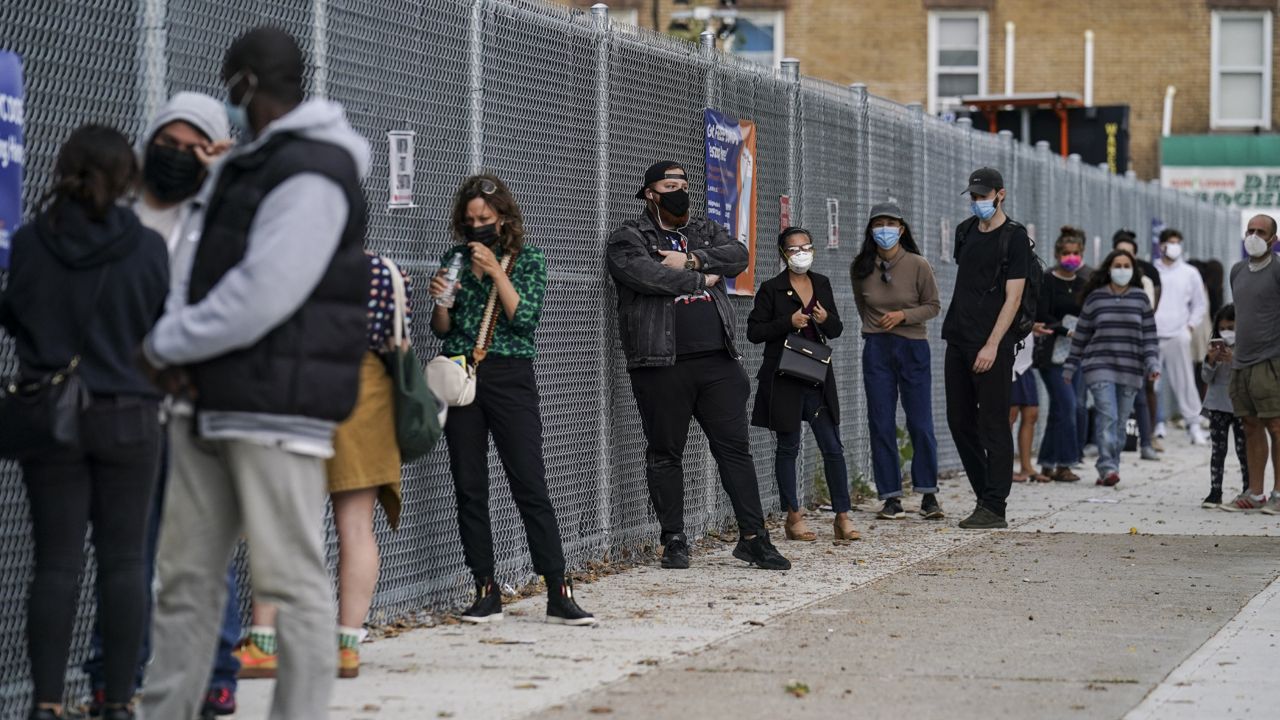NATIONWIDE — COVID-19 is reemerging at an alarming rate across the country with 31 states reporting more new COVID cases last week than the week prior as of Monday, according to data released by Johns Hopkins University.
Five states including Montana, New Mexico, Tennessee, North Carolina, and Vermont saw a 50% increase in COVID cases this past week compared to the previous week. Another 26 states, including Arkansas, Oregon, Idaho, Utah, Arizona, Colorado, Wyoming, and North Dakota, among others, saw between a 10-50% increase in positive coronavirus cases.
Only Maine, Texas, and Washington showed a downward trend in new cases, with all other states holding relatively stable, according to data from Johns Hopkins.
The Midwest has been particularly hard-hit by recent uptick in COVID-19 cases, with hospitalizations from the disease hitting their highest points of the year in the region.
South Dakota’s Department of Health reported 359 new cases on Monday, a downturn from recent days that could be explained by the fewer amounts of tests processed over the weekend. The new cases bring the state’s tally of people with active infections to 6,062, a new high during the pandemic.
“In South Dakota, we didn’t take a one-size-fits-all approach and the results have been incredible,” Gov. Kristi Noem told lawmakers in her state, which Johns Hopkins University says ranks second in the country for new cases per capita.
Doug Burgum, North Dakota’s Republican governor, acknowledged his state’s numbers are moving in the wrong direction as it hit new highs for active and newly confirmed cases, as well as hospitalizations. But he also touted the state’s test positivity staying in the 7% range.
“That’s an achievement compared to many, many other states that have never been in the spot to have this low of a positivity rate and have their economy open,” Burgum said last week. “If you’re saying that among the states, who’s doing a great job, those would have to be some of the criteria you would have to look at.”
In Iowa, which has eased most of its earlier coronavirus restrictions, COVID-19 hospitalizations also hit a record high last week. Gov. Kim Reynolds, however, has defended the state’s decision to reopen bars and send students back into classrooms without masks required.
“The president is also right. We can’t let COVID-19 dominate our lives,” Reynolds said.
The trend is concerning to experts, many of whom point to states in the Northeast like New York that were hard-hit during the early days of the pandemic and had since begun to recover, only to recently see a spike in COVID cases as social distancing restrictions are loosened as a cautionary tale.
"We're seeing those early suggestions here in the Northeast and what we wanted to make clear is the actions this time have to happen at the personal level, in our private homes, rather than just the public spaces," Dr. Deborah Birx of the White House coronavirus task force said during an appearance in Massachusetts on Friday.
Birx warned attendees at a separate event in Connecticut to learn from summer outbreaks in the South, where social gatherings between family and friends contributed to COVID clusters.
“What we’re seeing in the community is much more spread occurring in households and in social occasions, small gatherings where people have come inside, taken off their mask to eat or drink or socialize with one another,” Dr. Birx said Thursday.
The kind of spread that is happening now, she said, is “very different” from the spread of the coronavirus during March and April.
“This is really a message to everyone in Connecticut: the kind of spread that we’re seeing now is very different from the spread we experienced in March and April,” Birx said. “What we did in the spring is not going to work in the fall.”
The Associated Press contributed to this report.




